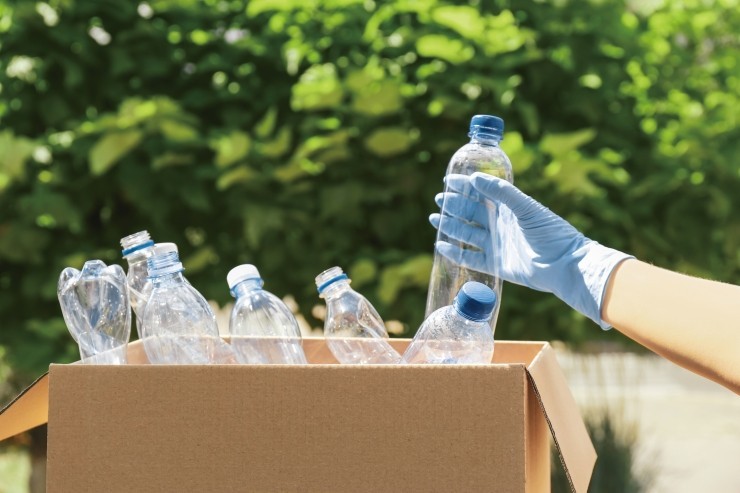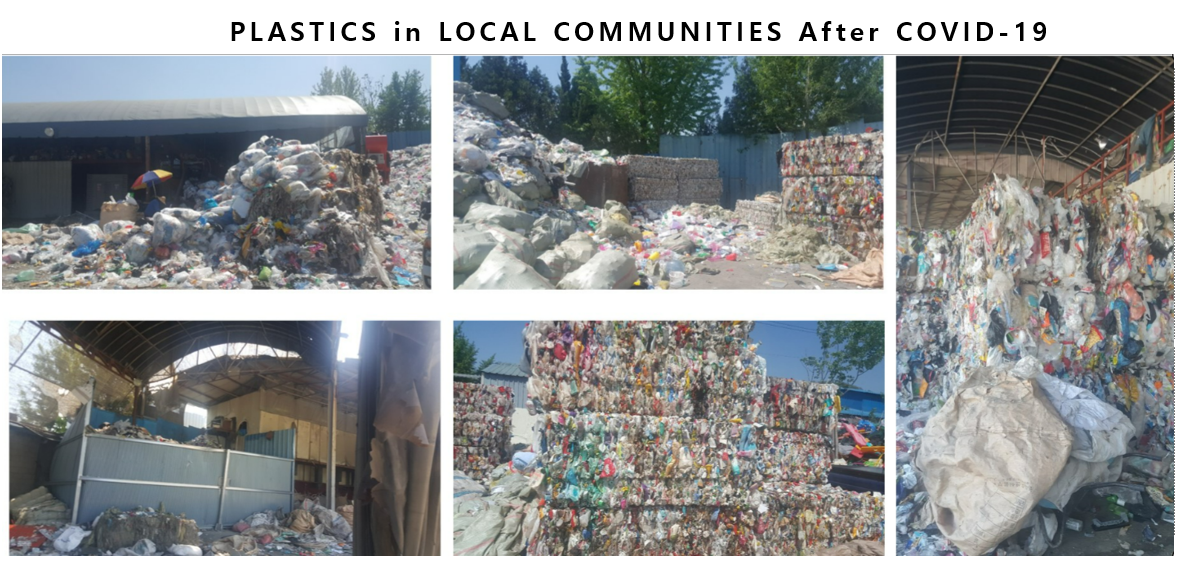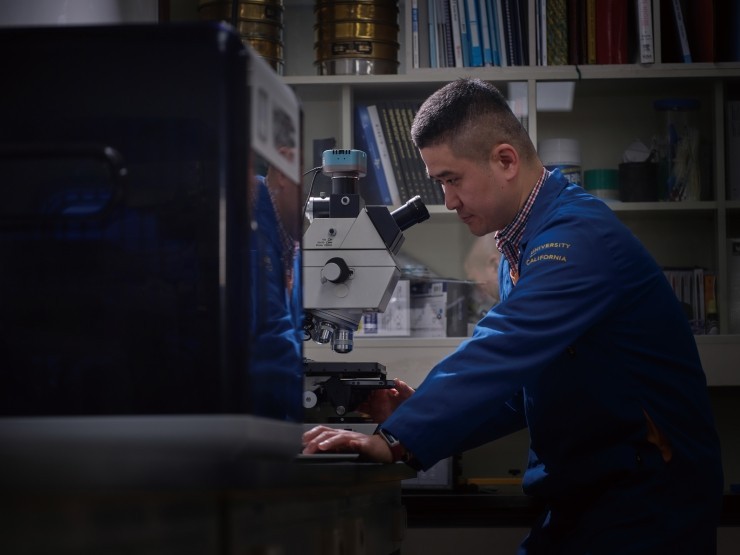- Name담당자-MOU
- Date2022/08/31 00:00
- Hit550
Plastic-Free World for the Green Earth
“Necessity is the mother of invention,” this phrase describes the footsteps of the historical developments of mankind. It is in our nature to overcome difficulties, hardships, and most of all, inconveniences in our lives. Many inventions were born in the 20th Century; however, “PLASTIC” is the greatest life-altering invention of all in our lives. We cannot imagine a day to live without seeing or utilizing “PLASTIC” items in our daily lives. We use “PLASTIC” for more than convenience. In fact, “PLASTIC” is deeply embedded in our lives.
Since the COVID-19 pandemic hit the global communities in 2020, people use “PLASTIC” more than ever for sanitary reasons. And, now we worry because we see and hear about “PLASTIC” mountains on the lands and “PLASTIC” islands in the oceans.
In a time like this, it is important to research using “PLASTIC” as the next industrial resource for the future. The following is the interview with Dr. Yosep Han from the Mineral processing & metallurgy research center about his research on efficient “PLASTIC” recovery and up-cycling in Geoscience R&D perspectives.

Q: How much plastic do you use at home?
A: I try to limit the use of plastic as much as possible, and I use reusable dishware such as mug cups for the sake of a clean environment. However, the COVID-19 pandemic cannot help overusing plastics for sanitary reasons. I also eat takeout foods from time to time to save my time for my family. Instead, I make sure to wash the packaging containers for recycling.
Since the pandemic, I notice that recyclable waste such as plastic has definitely increased. I am overwhelmed that ‘We really are living in the Age of Plastic.’
It saddens me that the human legacy to the earth is ‘Plastic.’ I realize more and more at work due to my research specialty. Even a decade ago, people’s general awareness about plastic waste is to be incinerated or landfilled. However, as plastic waste recycling became an urgent issue since COVID-19, more people and organizations were seeking KIGAM. For proper plastic recycling, it is necessary to separate and classify the materials by type, but there are not many places to research in this area. Unfortunately, this plastic recycling field is a known 3D (dirty, difficult, dangerous) industry. When you receive plastic waste for research purposes, it comes with food waste and even used baby diapers. Then, we weigh and separate them one by one, which is not an easy task. Dirty and difficult. Recycling plastic areas were overlooked and neglected in the past, but I believe that COVID-19 made people see the ‘plastic mountain’ that we cannot ignore anymore for the future generation. I am delighted that many people are paying attention to recycling for the sake of humanity. It is a slightly different meaning to recognize that we are in the middle of the age of plastic. For some, KIGAM’s plastic recycling research should be more proactive to make eco-friendly environment.
The process of plastic recycling involves many steps of procedures; there are many places that specialize in the latter part, which is chemical treatment. However, there is almost none like KIGAM that does 3D research on plastic, which fundamentally separates plastic waste by its original category. KIGAM’s research is to classify the clean plastic waste for each categorized material to utilize as the raw materials for recycling. Separating plastic waste shares a similar methodological procedure of separating the minerals from the mines. The mechanism of resource circulation is the same. Since KIGAM has specialties in assorting materials methods, we can share the years of know-how to help industry and research sectors in the field of plastic waste recycling. This plastic waste recycling is still a new industry as it is, it is rewarding that OUR RESEARCH can save the earth. I am very proud of it.
Q: You talked about assorting plastic waste by its fundamental materials, but is plastic waste recycling at home really helpful?
A: It is a known fact that disposing of plastic waste by its category saves a lot of procedures for the waste recycling industries and research organizations like KIGAM. For instance, the most plastics that come out daily are PET (polyethylene terephthalate), which are bottles for beverages, and PP (polypropylene), which are the lids, purchased by the recycling companies as the raw materials for up-cycling. Well-separated (by parts) disposed of plastic is a good example of resource circulation. I am sure that everyone is familiar with the preparation routine for discharging plastic waste as the following: (1) remove labels from the caps and bottles (2) be sure to empty the insides, if necessary wash the insides with water, and drain any liquid (it saves money as well as increase the recycling possibilities): (3) press bottles flat before releasing plastic waste. Another challenges, in terms of recycling plastic waste, are takeout food containers. Food containers are messy with oil/ greasy substances and stained from the spices. If you cannot remove greasy or food stains, they should not be categorized as recyclable plastics. Colored plastics, compound plastics, and a large amount of mixed-foreign substances on plastics are transported to a sorting company and go through the process of washing, crushing, and compression, which incurs a lot of environmental costs. If we separate plastic waste well before releasing them at home, it will greatly help the environment in the future.
Q: What is the recycling rate for plastic waste?
A: According to the Ministry of Environment (MOE) of Korea in 2019, the domestic plastic recycling rate was 62%. However, the 2019 Greenpeace Report shows that over 60% of Korea’s plastic recycling rate includes energy recovery, which is a type of incineration (burning up the plastic waste). If Korea adapts to the EU system, which is separating the actual material recycling and energy recovery, the domestic plastic recycling rate drops to 22.7%. This is not satisfactory, but it is a higher number compared to the global standards. The general plastic recycling rate is only 9%, incineration is 12%, and the remaining 79% of plastic waste is landfilled worldwide.

Q: As I follow your interview, it is essential to increase the plastic waste recycling rate. What is the current research on resource circulation?
A: The recent R&D trends in resource circulation are (1) Extracting crude oil and making pyrolysis oil by applying heat to the plastic waste (2) Utilizing raw materials for bioplastic from the biodegradable plastic, which is easily decomposed in the soil (3) Plastic pellets from the recycled resources, which carefully separated by materials, through regenerated extruder as raw materials for recycled plastic.
Q: For me, it is almost impossible to imagine a world without plastics. I want to hear about your opinions as the researcher on realizing a plastic-free society.
A: I believe there are no materials to replace ‘PLASTIC’ in the world. It is impossible not to use it. However, there are R&D efforts for eco-friendly treatment of plastics, and it is expected to solve environmental problems caused by plastic for the next generation in this era of a transitional period. Eco-friendly plastic is not my specialty, but it should be more funded for the greater interests. People know how plastic is bad for the environment; however, we do not realize the deadly seriousness unless it affects us directly. I believe it is human nature to look the other way to choose the conveniences over the inconveniences. We must be aware that today’s plastic water bottle will become tomorrow’s microplastic in our food to attack our most loved ones if it is not properly recycled and sorted for resource circulation. The healthiest way of coexisting plastic, human, and the earth is to minimize the risks of plastics.

Dr. Yosep Han said his research on the separation of plastic materials is a study for future survival. He continues his research because someone has to do it, not because fulfilling a mission for the earth. Today, he also appreciates many people are paying more attention to the environment and plastic recycling, and plastic recycling issues should be considered from the environmental perspective, not the cost-effectiveness perspective for the future of mankind. Dr. Han finishes his interview with this comment: If we consider ‘PLASTIC RECYCLING’ as everyone’s task (without avoiding responsibility thinking someone will do it), it would be possible to solve the plastic problems that we face little faster.
For More Information:
Dr. Yosep Han
Senior Researcher
Mineral processing & metallurgy research center
Resources Utilization Division
E-mail: yosep@kigam.re.kr